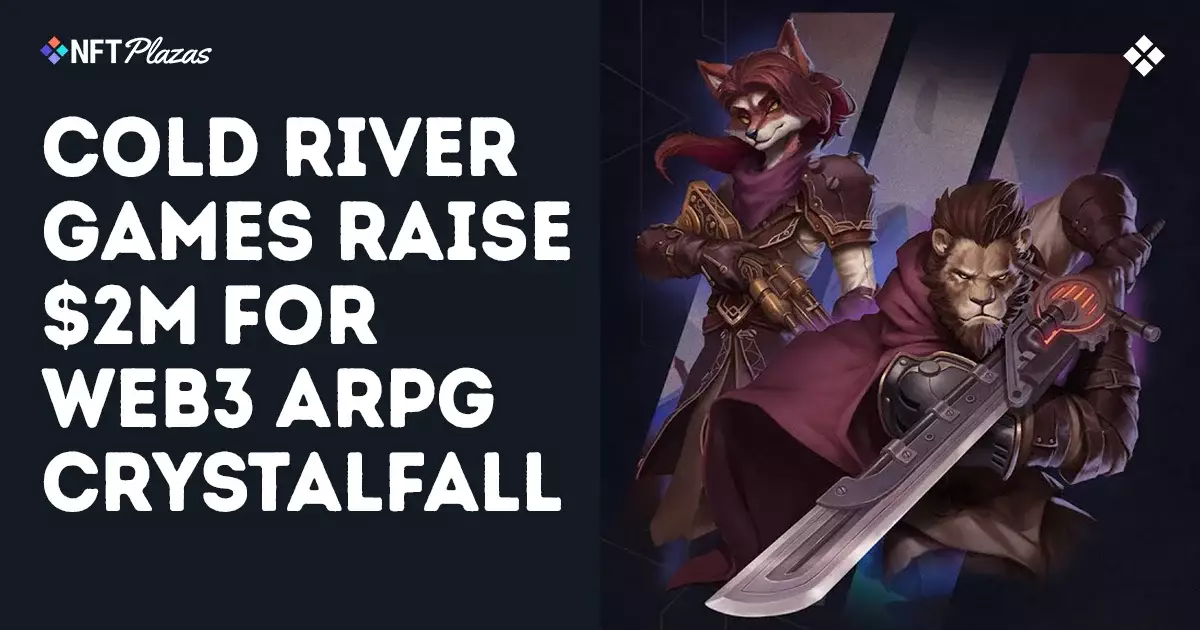The excitement surrounding blockchain integration in gaming is often portrayed as revolutionary, promising players ownership and economic independence through NFTs and cryptocurrency. However, beneath this shiny veneer lies a series of overhyped claims that fail to withstand critical scrutiny. The recent fundraising success of Cold River Games for their project, Crystalfall, exemplifies this misplaced optimism. While the studio boasts impressive credentials and a nostalgic appeal through its old-school ARPG design, the core premises surrounding blockchain use are riddled with doubts. Is it truly the future of gaming, or merely a speculative bubble fueled by venture capital’s hunger for the next big thing?
Much of the enthusiasm hinges on blockchain’s supposed ability to create secure, player-controlled economies. Yet, history shows that such digital economies are often fragile, susceptible to hacking, inflationary pressures, and manipulation. Cold River’s claim to integrating Web3 features that enhance loot and barter mechanics appears more like a marketing gimmick than a sustainable innovation. Cryptocurrency’s volatility and regulatory uncertainty cast long shadows over these developments, making the promise of a seamless, secure in-game economy more a wish than a reality.
The Politics of Gaming Innovation: Who Wins and Who Loses?
From a political perspective, the Web3 gaming push aligns with a broader trend of neoliberal market liberalism—privatizing digital assets, encouraging speculative economies, and minimizing regulatory oversight. This mindset favors creators and investors over the consumer, with the latter often bearing the risks of economic instability, scam risks, and a lack of meaningful regulation. The allure of Web3 in gaming, championed by venture capitalists and blockchain enthusiasts, is essentially a bid to commodify player engagement—turning what should be entertainment into a financial vehicle.
It’s worth noting that Cold River’s funding success, led by Swedish investors and capital firms such as Beam Investments and CoinFund, underscores how entrenched this ideology has become. They see “ownership” of digital assets as a new frontier for profit, indifferent to whether these assets genuinely benefit players or simply serve as speculative tools. The political dialectic here is clear: this trend edges towards a return to extractive digital economies, where the value is extracted from user participation rather than created for them.
Is Nostalgia Still Enough to Sustain the Industry?
Crystalfall aims to evoke nostalgia with its Diablo-like gameplay and post-apocalyptic steampunk setting. Cold River’s experience with titles like Path of Exile and Pillars of Eternity gives the project an air of credibility. However, nostalgia alone cannot carry the industry past its current exaggerated hype cycle. The temptation for developers to embed blockchain features in every new game distracts from substantive improvements in gameplay, storytelling, and innovation.
The real challenge is whether players will accept this trend or reject it. Many gamers see Web3 features as intrusive and unnecessary, serving as a distraction from core gameplay rather than enhancing it. While Cold River emphasizes loot progression and a secure in-game economy, these concepts risk superficial application without addressing deeper issues such as game design quality, player trust, and long-term engagement. Expecting players to embrace a blockchain-powered ARPG merely because it’s “old-school” is optimistic at best and naïve at worst.
The Future: A Cautionary Outlook
Funding success for projects like Crystalfall does not automatically validate the broader Web3 gaming movement. It simply highlights a bubble driven by investor optimism rather than consumer demand. Many of these initiatives are betting on a future where players become investors, a model fraught with risks that could alienate core audiences and dilute gaming as entertainment.
Moreover, the narrative that Web3 technology will “revolutionize” game economies presumes a level of maturity in blockchain infrastructure and regulation that does not currently exist. The industry faces a reckoning where the hype must give way to realism. Until these systems demonstrate tangible, player-centered benefits—beyond fleeting claims of security and ownership—Web3 remains more a speculative tool than an authentic evolution of gaming.
In essence, the excitement around projects like Crystalfall exposes the underlying fragility of the Web3 promise—one built more on financial innovation than on genuine improvements to gaming quality or fairness. As center-right perspectives advocate for balanced regulation and player protection, it’s evident that any true progress in the industry must prioritize safeguarding consumer interests over fleeting technological fads.

